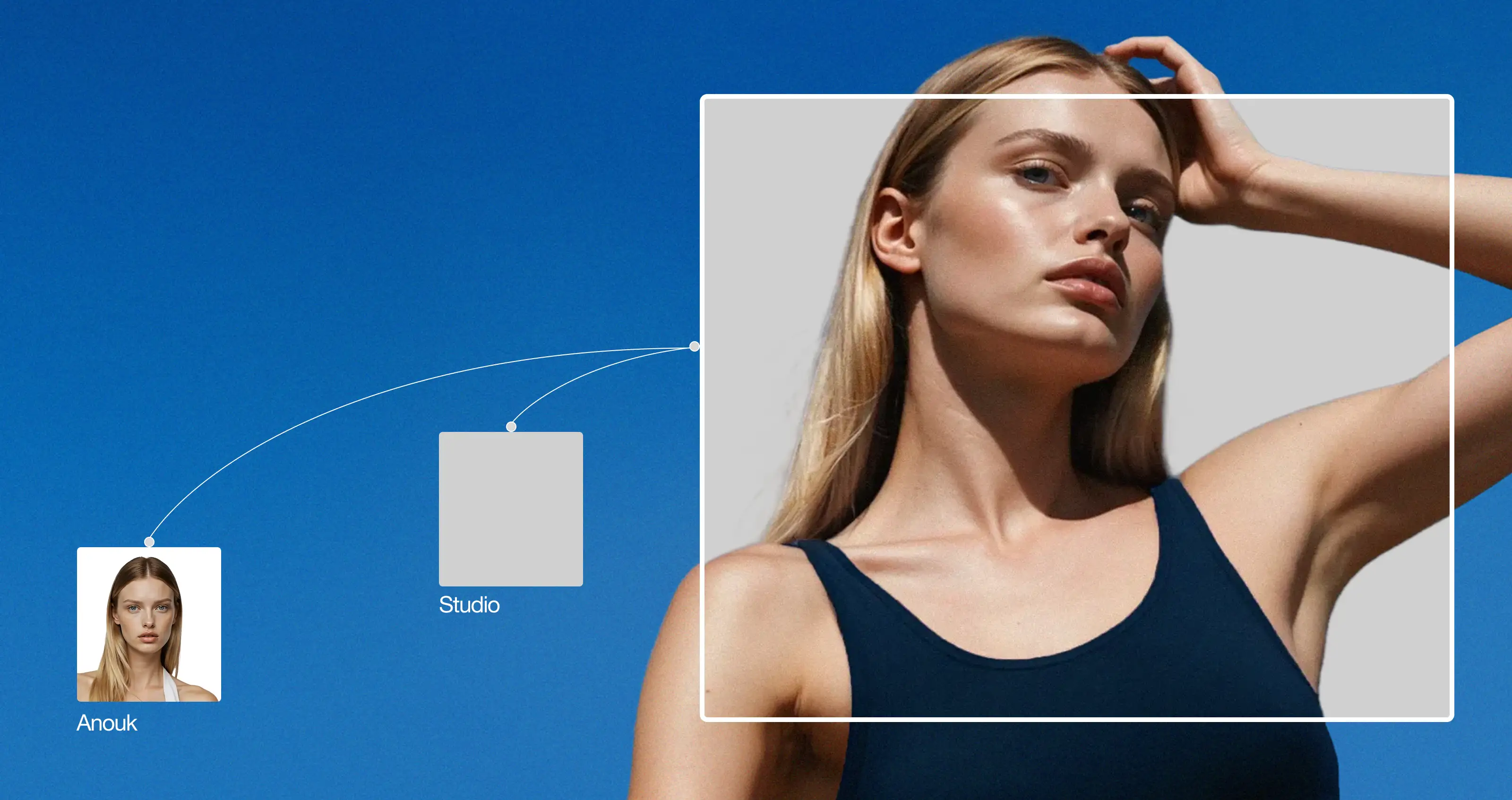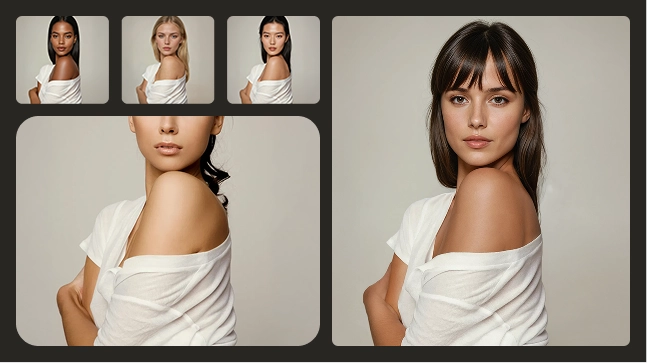AI or human? A smart guide to eCommerce image testing
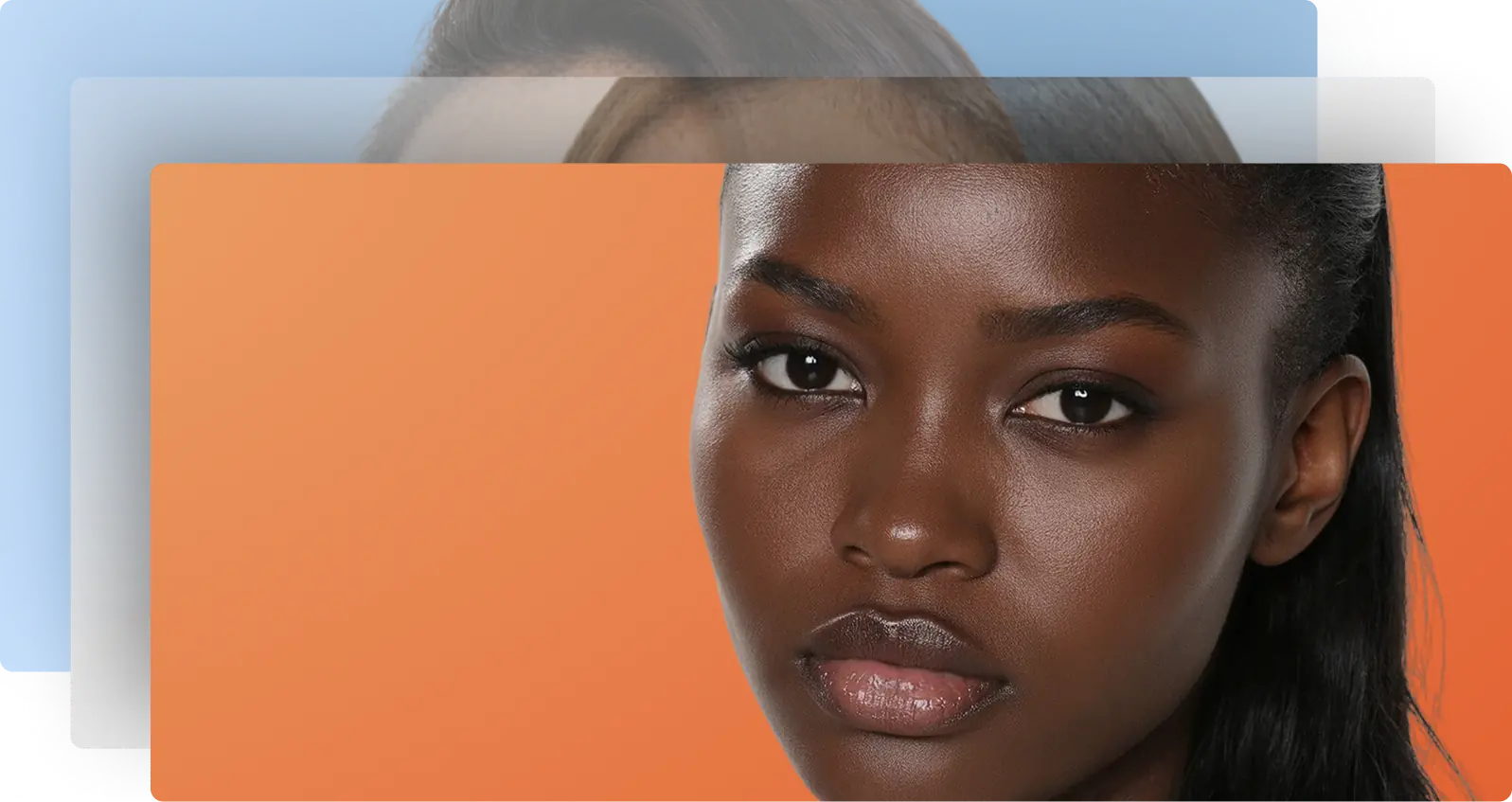
A/B testing is baked into fashion eCommerce, and eCommerce image testing is a core part of that process. You experiment with copy, layout, CTAs, and visuals to see what actually drives conversion. But one question keeps popping up: Do AI models perform better than traditional photoshoots?
This isn’t just a creative debate anymore. AI visuals are now fast, affordable and polished enough for brand campaigns. Testing them isn’t optional, it’s strategic.
Let’s break down what top performing brands are seeing, why AI models are gaining traction, and how to structure your eCommerce image testing for AI models vs. traditional photoshoots to measure impact on conversion, engagement and brand consistency.
Why fashion brands are testing AI photos and videos now
A few years ago, AI generated fashion models were a novelty at best. Uncanny faces, stiff poses, and unrealistic styling meant they rarely matched the quality expected for premium fashion campaigns. That has changed dramatically.
Today, pre-made AI fashion models deliver realism, variety, and polish that can replace traditional model photography in many cases, without compromising brand standards.This shift opens a new world of possibilities for eCommerce image testing, giving brands speed and flexibility
- Speed
AI photos and videos can go live in hours, not days. Allowing teams to launch campaigns and test creative variations almost instantly. - Scale
Generate imagery for every SKU and every channel, from product pages to social ads, without being limited by studio availability or model schedules. - Consistency
Maintain the same model, lighting, and styling across an entire collection, ensuring a uniform brand experience that builds trust and reduces hesitation. - Cost efficiency
Produce more content without ballooning budgets. Fewer studio bookings, less talent coordination and reduced post-production overhead.
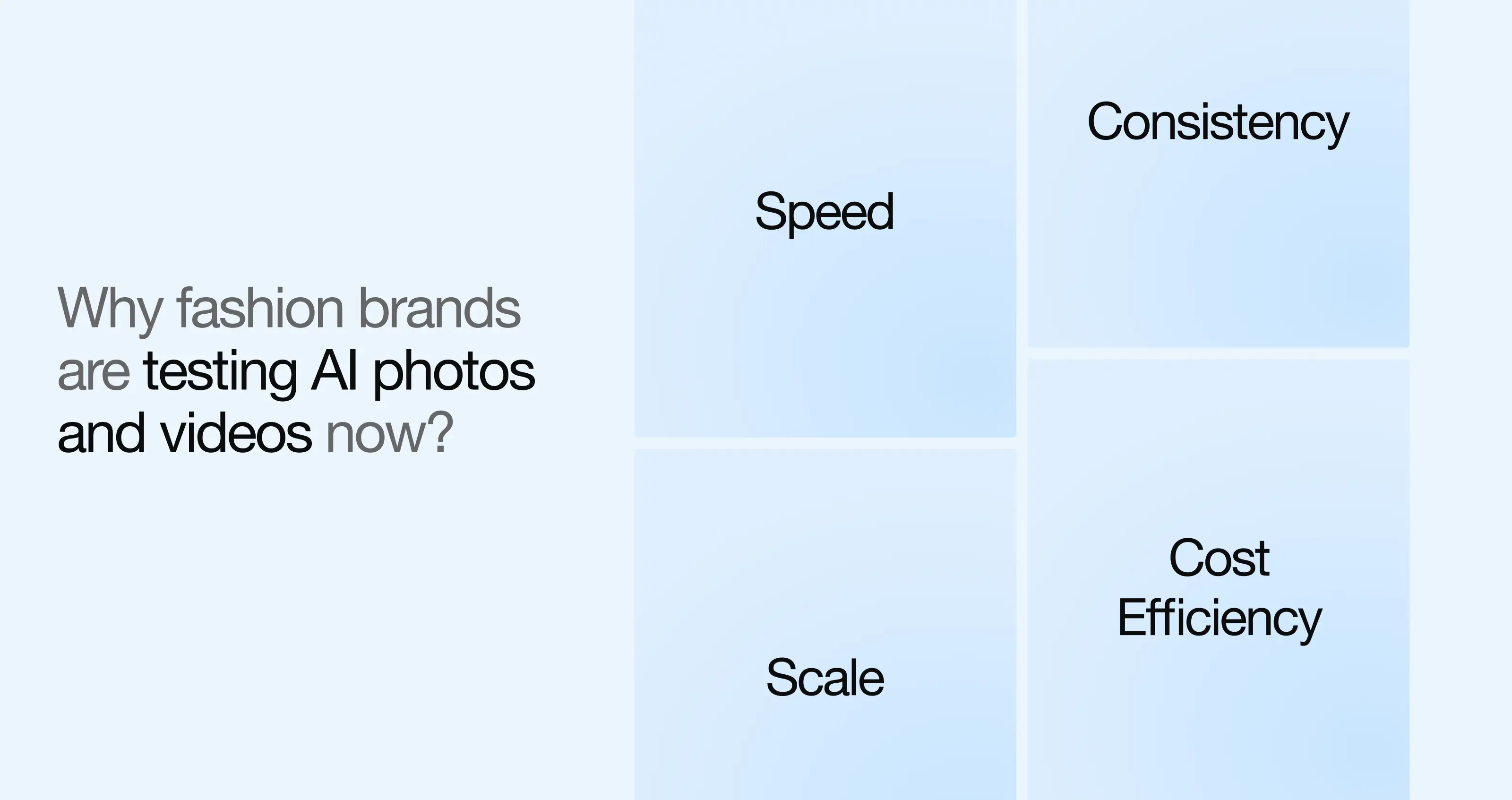
Operational wins are obvious. But the real question is conversion. How do these AI fashion photos and videos perform in the market? That’s what will determine whether AI fashion models, and AI generated video become a permanent part of the fashion imagery toolkit.
What recent eCommerce image testing is showing
The initial results from AI powered fashion photos and videos are striking. Shoppers respond positively when brands combine quality, consistency, and scale. AI fashion models aren’t just shiny novelties anymore, they’re conversion machines. Here’s what the data is telling us:
- Shoppers can’t get enough
Imagine giving customers more angles, more poses, more model types—all for the same product. That’s exactly what a 2025 generative AI study found. Shoppers decide faster, feel confident, and click “buy” more often. - AI holds its own against humans
ArXiv tests from 2025 prove it: AI fashion models drove 13% higher clicks and conversions than traditional photography. Smart brands don’t see AI as a gimmick, they see it as a scalable, high-performing tool. - Real world wins
Marketplaces running controlled experiments saw ~14% lift in conversions with AI-powered visuals. The brands that acted quickly didn’t just test, they scaled top performers across SKUs and channels, turning insights into real revenue.
Why it works
The secret? Consistency + quality + speed. Cleaner visuals, uniform lighting, and realistic styling reduce hesitation. AI gives brands the flexibility to test, iterate, and optimize faster than ever.
The takeaway
eCommerce image testing proves it: high-quality, consistent visuals convert better. Combine AI efficiency with human creativity, and you get a continuous loop of optimization that keeps your campaigns fresh, fast, and profitable.
- AI generated fashion models drove 13% higher clicks and conversions compared to traditional photography. (arXiv)
- AI powered photos and videos lifted conversions by ~14% in controlled tests. (Independent marketplace experiments)
Why AI visuals might be outperforming
Key drivers for performance in eCommerce image testing:
- Consistency builds trust
Uniform lighting, pose and model appearance reduce hesitation. - Speed fuels iteration
Test and tweak in real time for higher performing visuals. - Clarity drives decisions
AI highlights fit, fabric and drape as well as a single human shot photo. - Cost savings unlock more tests
Lower production costs mean more tests, more data and faster optimization.
<blogcta>
When AI visuals don’t always win
AI photos and videos can be powerful, but they don’t automatically guarantee better results. Real-world examples from 2025 show why eCommerce image testing of AI models vs traditional photoshoots is essential.
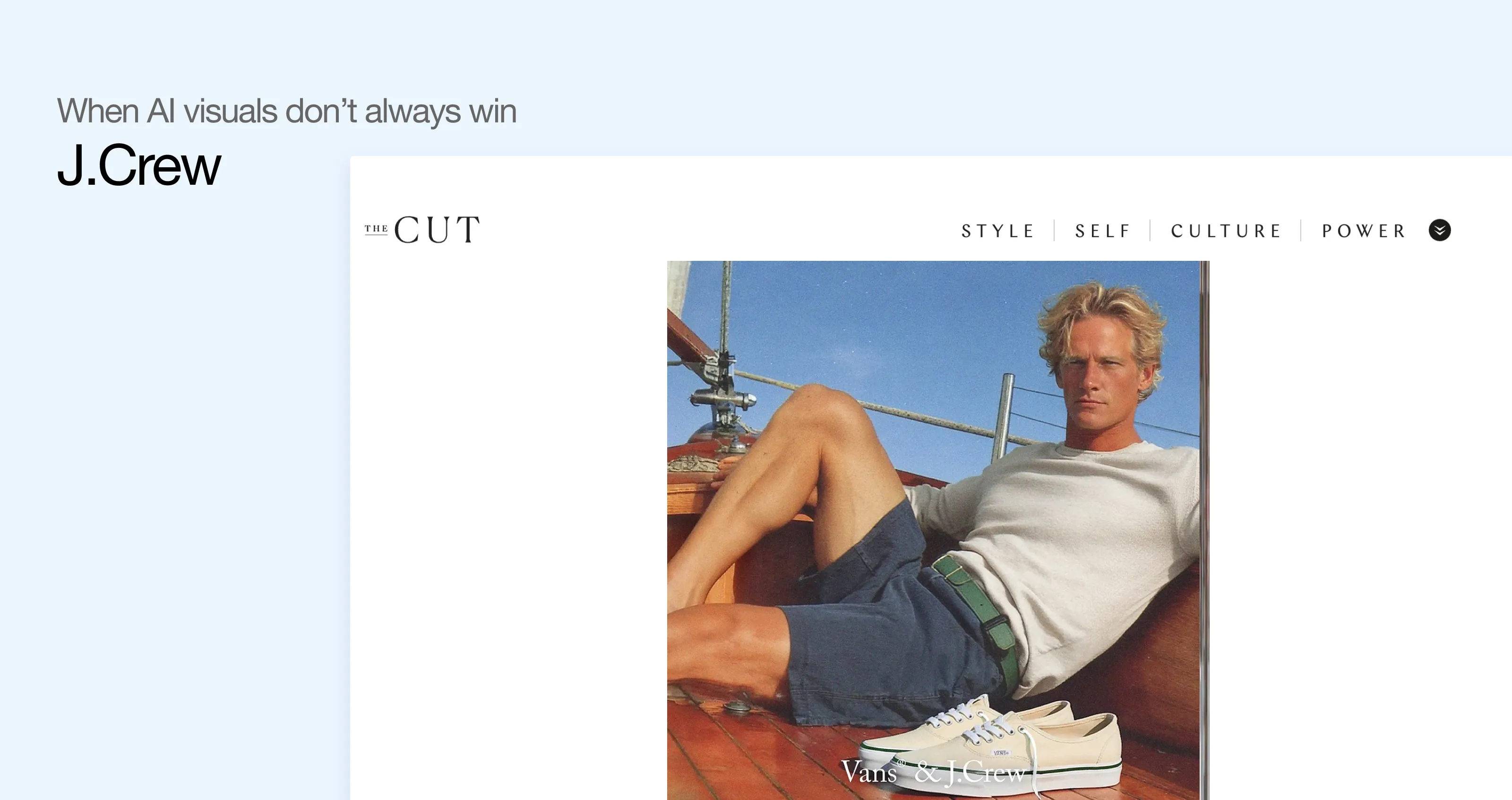
Take J.Crew. Early in the year, they rolled out AI generated campaign images that looked polished but lacked the warmth and authenticity customers expected from the brand.
The result? Engagement dipped and social feedback highlighted that the visuals felt “stiff” and disconnected. By adjusting their workflow—adding human curation to AI outputs and running structured eCommerce image testing, J.Crew could have refined which visuals resonated with their audience, ultimately improving conversion.
Guess faced a similar challenge. Their AI generated models were visually striking but overly stylized, with unrealistic proportions and poses.
Consumers criticized the campaign for lacking diversity and authenticity, which temporarily hurt engagement.
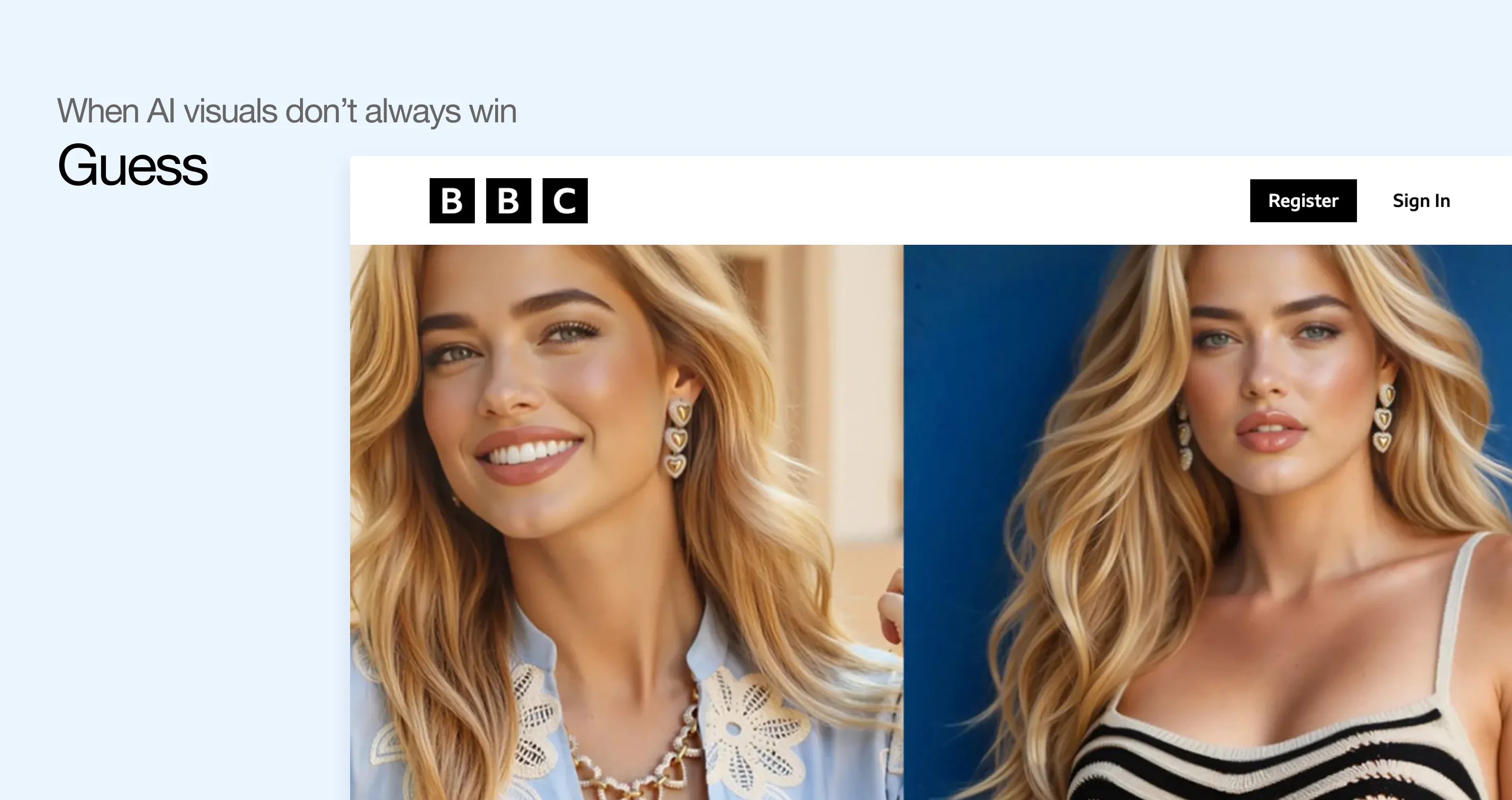
If they had tested across categories and audience segments, Guess could have learned which styles aligned with brand expectations and could have safely scaled their use of AI models without backlash.
These examples highlight four key lessons:
- Authenticity matters
Human emotion still drives connection. Lifestyle brands need AI visuals that feel real and on-brand. - Styling accuracy
Small differences in fit, fabric, or posture can influence conversions and returns. - Category sensitivity
Swimwear, activewear, and luxury are more sensitive to visual discrepancies than categories like outerwear or accessories. - Novelty effects can mislead
Early clicks or engagement may reflect curiosity rather than long-term conversion.
The takeaway:
Results vary by audience, category and execution. Structured eCommerce image testing is the only way to know which AI photos and videos truly perform, letting brands balance speed, creativity and trust while avoiding costly missteps.
How top brands structure eCommerce image testing
Your team already knows A/B testing, but the trick with AI visuals is isolating the visual itself. Top brands approach this methodically, turning eCommerce image testing into a strategic growth lever.

1. Segment by use case
Start small and controlled. Pick a high-traffic area—like product detail pages (PDPs), paid social ads, or collection pages. Keep everything else identical—copy, layout, CTA—so the only variable is the visual.
Example:
- Control (A): Traditional human model photo
- Variant (B): Same garment, same pose, AI model visual
This setup lets you see exactly how AI visuals perform against traditional photography without confounding factors.
2. Test by category
Not all categories behave the same. Activewear, swimwear, formalwear and luxury items have different visual expectations and conversion drivers. For example, realistic body shape and fabric texture may matter more in swimwear than outerwear. Segmenting tests by category ensures results are actionable and relevant.
3. Measure beyond clicks
Clicks are just the start. Top-performing brands track a range of metrics to understand real business impact:
- Add-to-cart rate
- Bounce and dwell time
- Checkout time
- Average order value (AOV)
- Return rate
- Post-purchase behavior and repeat engagement
Real world example:
A major fast-fashion brand tested AI visuals on its high-traffic PDPs. Initial CTR was similar between AI and human models, but add-to-cart rates and checkout completion improved when AI images were paired with consistent styling and realistic poses.
Meanwhile, Guess learned that stylized AI visuals drove curiosity clicks but higher return rates, prompting adjustments in styling and category-specific testing.
Key takeaway:
Structured eCommerce image testing isn’t just about swapping photos, it’s about isolating variables, segmenting by category and measuring meaningful outcomes. Brands that follow this framework can optimize conversion, reduce risk and confidently scale AI visuals across campaigns.
Real World insights from eCommerce image testing
Structured eCommerce image testing isn’t just about swapping photos—it’s about solving real business challenges. Top brands are using AI visuals to tackle five key areas: speed, scale, consistency, conversion and cost efficiency.
1. Scale content quickly
AI makes it possible to generate large volumes of high-quality visuals across multiple SKUs in a fraction of the time of traditional shoots.
Juan & Me created AI generated fashion photos across dozens of SKUs, testing different model types, poses and backgrounds. The result: a 128% lift in conversions, showing how rapid content scaling can directly impact revenue.
2. Boost conversion through testing
By isolating visuals in structured A/B tests, brands can see which images truly drive engagement.
Get Dressed Collective standardized their visual style and ran systematic eCommerce image testing, achieving a 150% higher CTR.
Ecomko, an independent brand, saw ~30% lift in conversions when testing AI enhanced product imagery against traditional photos, confirming that image quality and style consistency are key drivers of purchase behavior.
3. Maintain brand consistency
Consistent models, lighting, and poses reduce hesitation and increase trust. Zara, for example, used AI generated lookbooks that mirrored traditional studio photography, keeping their brand aesthetic intact while scaling across collections.
Uniform visuals help consumers feel confident in what they’re buying, particularly for lifestyle and fashion brands where trust is critical.
4. Accelerate testing and campaign iteration
Speed is a competitive advantage. AI allows teams to produce multiple visual variations in days rather than weeks, making it easier to respond to trends and optimize campaigns.
Alibaba improved CTR and conversions by 13% using AI-generated product visuals that were tested and iterated rapidly. Fast iteration ensures campaigns stay relevant and engaging.
5. Optimize budget and reduce costs
AI reduces reliance on studios, models, and stylists, freeing budget for more campaigns or additional testing.
Jordache leveraged AI generated models to cut costs while boosting the volume and quality of product imagery, enabling the brand to reinvest savings into additional campaigns and paid social experiments.
Cost efficiency allows brands to experiment more frequently without sacrificing quality.
Key takeaway
The pattern is clear: structured eCommerce image testing, combined with realistic, on brand AI photos and videos, drives measurable business results. Success comes from scaling content intelligently, testing thoughtfully, maintaining brand consistency, accelerating campaigns and optimizing budget.
When these solutions are applied strategically, brands don’t just keep up, they gain a competitive edge.
Scaling what works in eCommerce image testing
Running tests is only the first step. Real impact comes from scaling what performs best. Top brands treat eCommerce image testing as a feedback loop, turning insights into repeatable, high-performing visuals.
1. Cluster your data
Once tests prove out, segment results by product type, audience and price tier. Not all visuals perform the same across categories or demographics.
For example, AI visuals that convert well for activewear might need tweaks for swimwear or luxury items. Clustering ensures insights are specific, actionable, and tailored for different segments.
2. Apply learnings to creative
Winning visuals aren’t just templates, they carry cues that can be applied broadly. Even if human photography outperforms AI in a test, you can replicate successful AI traits such as consistent lighting, model poses, or background composition across campaigns.
Brands like Zara and Get Dressed Collective have seen lifts in engagement and CTR by adopting these visual cues across multiple product lines.
3. Automate iteration
Once you identify the visual styles that resonate, scale them quickly. AI makes it easy to apply winning poses, model types, or lighting setups across hundreds of SKUs in days instead of weeks.
Juan & Me used this approach to roll out multiple variations of high-performing visuals across dozens of SKUs, maintaining brand consistency while accelerating time-to-market.
4. Update your playbook
Scaling success requires a clear framework. Define when to use AI vs. human visuals, which categories benefit most from each, and how to structure ongoing eCommerce image testing.
Over time, this playbook becomes a strategic guide, helping your marketing and creative teams make faster, more informed decisions while consistently improving conversion and engagement.
Key takeaway
Scaling what works isn’t just replication—it’s structured learning. By clustering data, applying insights to creative, automating iterations, and documenting best practices, brands can turn tested visuals into a growth engine.
When done right, eCommerce image testing becomes a strategic cycle:
test → learn → scale → repeat.

The future of eCommerce image testing
The next evolution of eCommerce image testing is moving beyond seasonal campaigns or quarterly A/B cycles. Leading brands are embracing always-on testing, turning visual experimentation into a continuous, data-driven process that fuels conversion and creativity at scale.
1. Launch at scale, instantly
AI allows teams to generate multiple SKUs overnight with consistent lighting, model poses and styling. This means you can test dozens of products across multiple categories without waiting for traditional photoshoots.
2. Test across channels simultaneously
Visual performance is no longer just about one page or one ad. High-performing brands run tests across paid social, collection pages and PDPs at the same time, identifying which visuals resonate best across different touchpoints.
3. Retire low performing variants instantly
Always on testing means underperforming visuals can be phased out in real time. This prevents wasted impressions and ensures your campaigns consistently show what actually drives engagement. The agility allows brands to be responsive to trends, seasonal shifts, or changing audience behavior.
4. Generate new visuals from top performers
High-converting templates become the foundation for new creative iterations. AI enables rapid generation of variations—different models, colorways, and layouts—while retaining the visual traits proven to drive results.
5. From quarterly task to continuous creative loop
AI transforms eCommerce image testing from a periodic project into a continuous loop of testing, learning, and scaling. Visual insights are no longer static—they evolve with audience behavior, category trends, and campaign performance.
This always-on approach allows brands to optimize for conversion, engagement, and brand consistency at every touchpoint, keeping them agile in a fast-moving fashion landscape.
Ethical and brand considerations
As AI becomes a core part of fashion imagery, it’s not just about speed or scale. Brands also need to consider ethics, impact and creative responsibility. Making intentional choices around transparency, representation, sustainability and creative integrity ensures that AI visuals strengthen both conversion and trust.
1. Transparency
Brands must decide when and how to disclose AI generated photos and videos. Being clear about AI usage builds trust with consumers and protects brand credibility. Thoughtful disclosure signals that your brand is both innovative and responsible.
2. Representation
AI photos and videos should reflect the diversity of your audience. Showcasing a range of body types, skin tones, genders and identities isn’t just ethical, it drives engagement, fosters brand loyalty and ensures campaigns resonate authentically across communities.
3. Sustainability
AI can replace physical photoshoots, reducing waste, travel and the environmental footprint of production. Brands can generate high-quality visuals without shipping garments, booking studios, or staging large productions. This makes sustainability an integral part of the creative process rather than an afterthought.
4. Creative integrity
AI is a tool to enhance, not replace, human creativity. It can support styling, art direction and maintaining brand voice across campaigns. When used thoughtfully, AI accelerates workflows while preserving the authenticity and storytelling that define a brand’s identity.
<blogcta-2>
Bonus tip: Test smarter, not just faster
Testing visuals isn’t just about swapping AI fashion models for human models. It’s about understanding what truly drives conversion. Granular insights into creative choices help brands balance aesthetics, emotion, and performance.
- Does consistency beat emotional storytelling?
Some brands thrive on polished, uniform visuals across SKUs, while others see higher engagement when images evoke a lifestyle or emotional connection. For example, lifestyle-focused swimwear brands often outperform with vibrant, real-world scenes, whereas classic apparel lines may benefit from clean, consistent backgrounds. - Do neutral backgrounds outperform lifestyle scenes?
Neutral or studio backgrounds highlight the product, reduce distractions, and simplify comparison, but lifestyle environments can create aspirational context and stronger emotional appeal. Testing both at scale helps identify the right balance for your audience. - Which poses or angles convert best?
Small differences—like a model’s stance, gaze, or camera angle—can dramatically impact add-to-cart rates and checkout behavior. Structured eCommerce image testing allows brands to pinpoint which visual cues resonate and replicate them across collections.
AI makes this level of testing possible instantly. By generating multiple variations of poses, angles, backgrounds and styling, brands can unlock actionable insights in days rather than weeks, turning creative experimentation into measurable growth.
The next chapter in eCommerce image testing
The story of eCommerce image testing is evolving. AI generated fashion photos and videos aren’t just a tool for efficiency, they’re a way to uncover what truly resonates with customers. Every SKU, angle and pose becomes a data point, turning creative intuition into measurable insight.
Brands that treat AI as a collaborator, not a replacement, are seeing the payoff: faster iteration, more engaging visuals and campaigns that reflect both style and authenticity. The advantage isn’t just in speed or scale, it’s in the ability to learn continuously, refine creative decisions in real time and make every image a strategic asset.
Looking ahead, the brands that succeed won’t be the ones who adopt AI first. They’ll be the ones who test smarter, adapt faster and combine human creativity with AI precision. In this new era, eCommerce image testing becomes not just a step in the campaign process, but the engine that drives innovation, conversion and lasting customer trust.
.webp)

